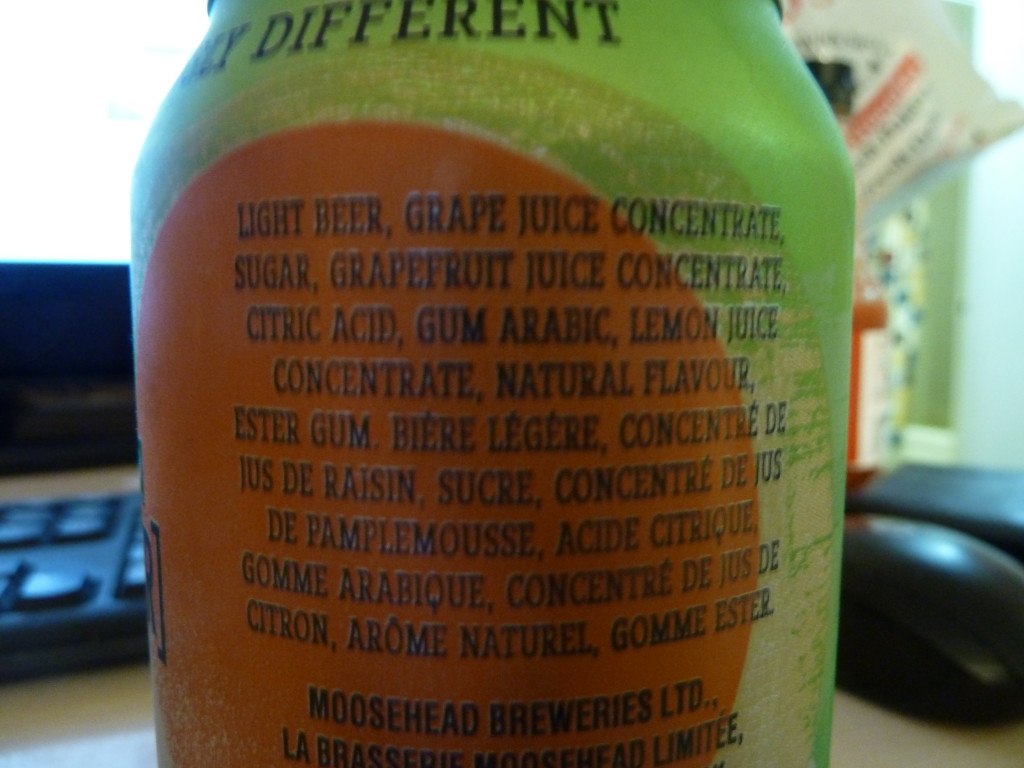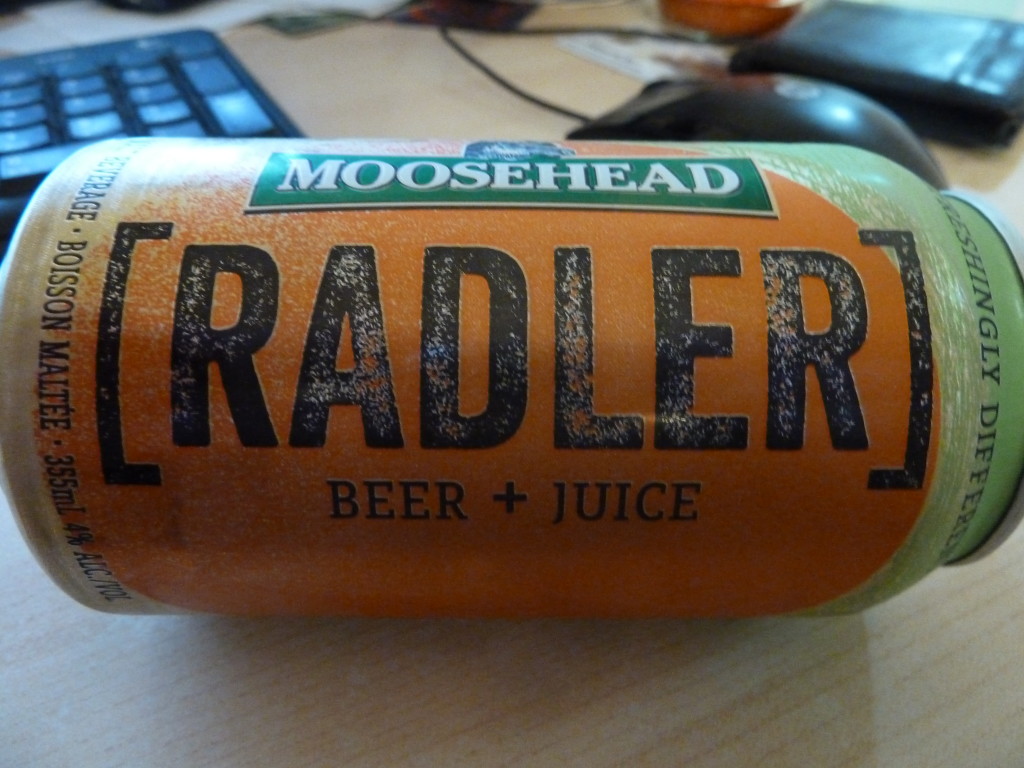The Background
I go back and forth on Moosehead. Here’s the thing. Since the BA in the States changed the definition of “Craft Beer” to include Yuengling, it stands to reason that Moosehead is now a “Craft Brewer.” At the very least, they’re an independent company that has existed for a very long time. They are, I believe, the only wholly Canadian owned brewery from the 19th Century that’s left standing and that should count for something in a world where anyone can find an Angel Investor and bang out a 100 gallon batch of mediocre tonsil oil.
They brew something like 1,200,000 HL. That means that Moosehead is now actually two thirds the size of Sierra Nevada or one fifth the size of Sam Adams. The problem is that they’re always that little bit late to the party. Moosehead doesn’t really innovate so much as follow the big players. Look at the lineup of beers that are available on their website. They have all of the big hits of the last twenty years, a situation which would be ideal if they were a large market FM station. There’s Light Lime and Low Carb and Dry and Dry Ice. They also make James Ready’s lineup of discount beers, a fact which is somewhat obscured by their web presence although it probably needn’t be. As the discount category goes, they actually fared pretty well when I did Discount Beer February.
The best thing Moosehead did in recent memory was launch Boundary Ale. It was really pretty good. Is it mentioned on the Moosehead website? Nope! Is it still in stores? Sure! Fellas, when you get something right, take the credit, ok? Hell, throw some more resources at your craft beer division over at Hop City. Between that and Boundary Ale, you’ve got the potential to take advantage of both the standard beer market and the growing craft segment in the Maritimes. Either way, you win.
If I were going to put it diplomatically, I’d tell you that Moosehead Radler is an interesting twist on a standard Radler. Since I am not writing this for a newspaper, I don’t have to be diplomatic. Forget all that (probably legitimate) historical humbug about Bavaria and cyclists. Radler is meant to be a combination of beer and one other liquid. The most popular choices are grapefruit juice or lemonade. This is a really simple idea.
Moosehead Radler certainly has the correct aromas, all sharp grapefruit and zest, but the body is sticky sweet. When I find my lips smacking between sips when a product’s PR sheet is claiming that it’s refreshing, a twinge of doubt crosses my mind. Let’s look at the ingredients.
Apparently, Moosehead Radler contains Moosehead Lager, Grape Juice Concentrate, Grapefruit Juice Concentrate, Lemon Juice Concentrate, Gum Arabic (probably a foam stabilizer), Citric Acid (probably for additional lemon flavour), Natural Flavour (probably better than unnatural flavour), and Sugar.
The Harsh Realities of the Market
Let’s look at the rest of the Radler segment.
| Stiegl Radler | Beer and Grapefruit Juice | 50/50 | 2.5% |
| Schofferhofer Radler | Hefeweizen and Grapefruit Soda | 50/50 | 2.5% |
| Wernesgruner Radler | Pilsner and Lemonade | 50/50 | 2.5% |
| Rickard’s Radler | Beer, Juice from Concentrate, Natural Flavour | 66/33 | 3.2 |
| Amsterdam Sweetwater Squeeze | Beer and Blood Orange Soda | ~80/20 | 3.8% |
You’ll notice that all of these beers on the Ontario market play by the rule that you’re basically allowed two ingredients. Beer and something. Compared to the rest of the market, Moosehead Radler is significantly overthought. Grapefruit juice from concentrate makes complete sense, but where on earth is Grape Juice from concentrate coming from? If you have three juices from concentrate, do you really need to add extra sugar? I really want to see the caloric information on Moosehead Radler.
I understand that Radler is supposed to be a light, spritzy kind of a thing, but the most successful in the market by far are the Europeans, which are tart and lightly bitter and have two ingredients. Why would you not emulate that instead of making something more reminiscent of Mountain Dew?
Another thing: All of the other Radlers are available in a single can format. Stiegl, the best of them, is $2.70 a can. Moosehead Radler is $26.95 for 12x355ml cans. You can get 10x500ml cans of Stiegl for the same money or 11x500ml cans of Wernesgruner or Schofferhofer. All three of those are better options.
What we’ve got, then, is a product that has completely misunderstood the mission statement, is higher in alcohol, caloric content, sugar and price than all of its major competitors and is a late addition to the Ontario market with other brands having established themselves. It’s a miracle it’s not already listed as discontinued.

Not that it’s any good, but you forgot about Waterloo Radler! Maybe intentionally?
I haven’t tried the Moosehead version, but have tried the five in your comparison and I have to say that nothing touches Stiegl’s example. It’s just perfect. Amsterdam and, surprisingly Rickard’s come the closest. The rest pale in comparison.
Nice writeup as usual though!
To be honest, I saw both their grapefruit and lemonade versions, which weigh in at 3.1%. I couldn’t get the ingredient list online, so I omitted them.
I have a couple cans, they use multiple concentrates and freakin’ HFCS!
Sweetwater actually has both blood orange and grapefruit juices (not from concentrate) as well as the soda part. It’s probably my favourite right now, but Stiegl, Schofferhoffer and Rickard’s are all in my fridge too.
How the hell do they have all that juice and it still comes out as 4% with a “light beer” as the base?
A fine question! The press material says that they start with Moosehead Lager and then blend until it is 85% Beer and 15% Juice. Given that it is 4% alcohol, that means that either their math is wrong or there’s 5% for nothing. A fine YES song, but not what I want in PR material.
Kiddie pop… should do well among its target market.
Not wrong, but when you consider that some of the European ones manage elegance it makes you wonder.
I’ve heard from many Germans that Radler is most commonly consumed as a breakfast beer … a beermosa if you will. A concept I fully endorse.
My Swiss relatives say it is what ladies drink. Call me a Swiss lady! That stuff is delicious.
You got it, Swiss Miss.